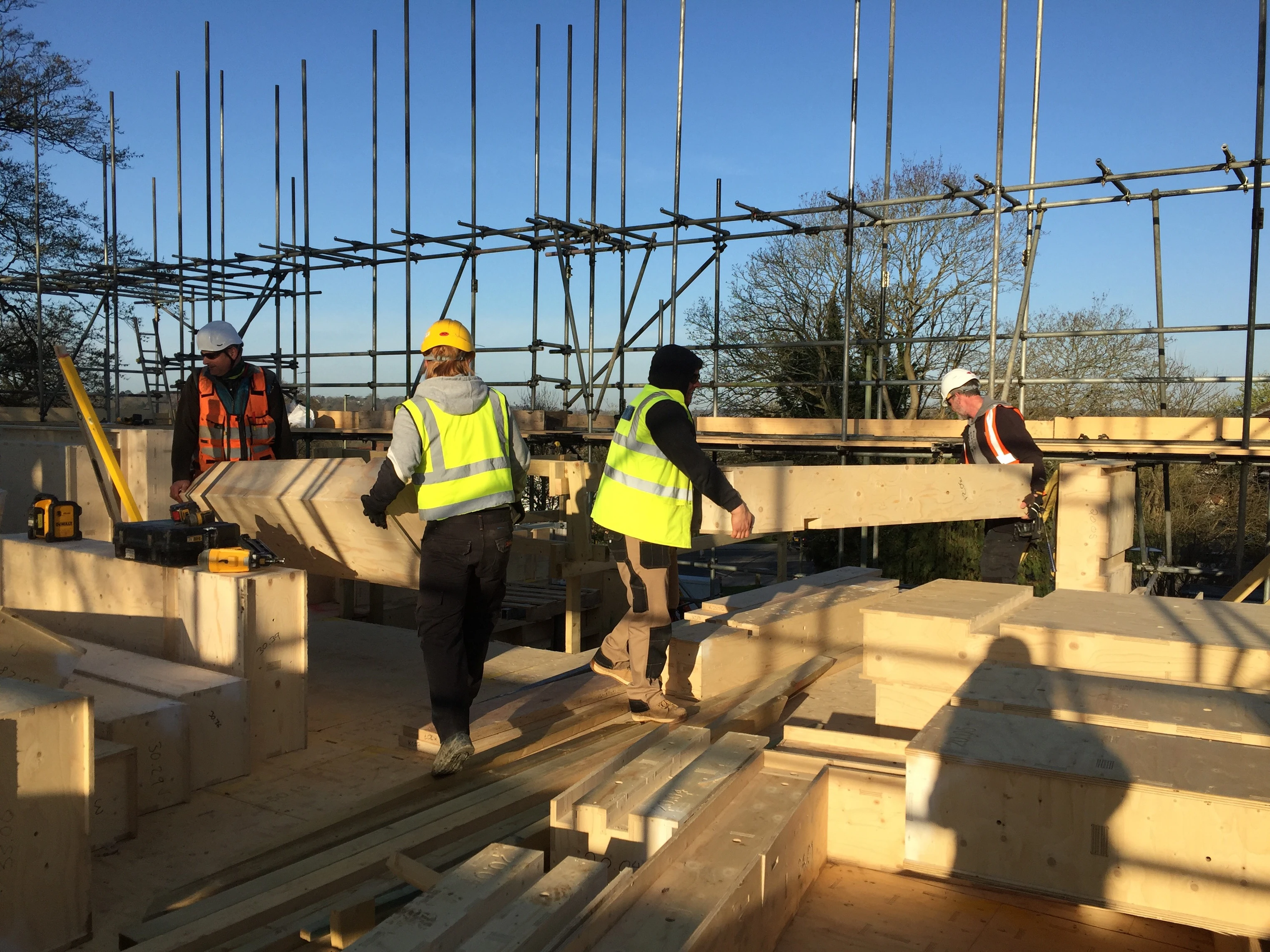What is digital manufacturing?
- Anastasiia Korobkina

- Mar 12
- 5 min read
Digital manufacturing is part of our pioneering approach to designing and building high performance homes. We're the world’s first home manufacturer to use a purely digital design and production process.
But, as a company operating in a niche overlap between the design, architecture, manufacturing and construction industries, what does this actually mean?

The precision of digital manufacturing means that our digital designs become reality.
What does it mean for something to be digitally manufactured?
Also sometimes referred to as digital fabrication, digital manufacturing is a design and manufacturing workflow where digital data drives the manufacturing process.
Starting with a design on a computer and ending with a precisely produced physical product, digital manufacturing has two main advantages; it ensures accuracy and precision, and offers exciting new design opportunities.
The end-to-end digitisation of manufacturing for construction removes human error. Traditional methods would see a builder essentially making a building by hand on site and potentially interpreting the design and details incorrectly or inconsistently.
Using our advanced Design for Manufacture and Assembly process, we design and fabricate unique structural components - shapes that would not be possible to produce by hand. This is in contrast to traditional prefab factory production lines which often replicate manual processes at scale.

Digital technology can transform designers into makers
Digital manufacturing has become hugely influential in the architecture industry. It blurs the lines between designing and making and has led to a transition in AEC (Architecture, Engineering & Construction) where companies that would have traditionally been ‘design’ only, now 'make'.
Digital manufacturing is often associated with the machine that manufactures (e.g. a 3D printing arm) but it actually describes the end-to-end digital process.
How does our system work?
It starts in the studio with a 3D computer model of a Facit Home, which our architects have designed to suit the customer and the site. Created using BIM design software, this model contains a huge amount of detailed information for manufacture, particularly for our advanced timber structure, the Facit Chassis™️. The underlying chassis model can be separated into individual parts to isolate the details of each structural component.
Once isolated, we deconstruct each component into flat patterns and convert this into G code, a computer language that can be used to convey instructions for the automated machinery.
The production information is gathered and G code sent to our CNC router - a computer controlled cutting machine with a spinning blade that cuts patterns out of a flat sheet of FSC spruce plywood.
Timber is perfect for a production and construction process like ours; it is a material that can be used with the CNC router, and it is strong, durable and sustainably sourced.
Once cut, the plywood flat patterns are assembled into 3D components. These look like big boxes that are delivered to site and assembled to create the Facit Chassis™️.
Applying this process to features within each home, we have been able to design and manufacture a unique laser cut staircase and structural steel tree columns. These examples show the diverse opportunities in the process and how, with the same system, we can use different materials and machinery for digital manufacturing.
Precise information from the model is also used to supply accurate production data to our partner manufacturers, such as our triple-glazed window manufacturer, Velfac. This ensures that every window is made to exactly the right size, based on a schedule exported directly from the model.
The UK’s first home manufacturer
Facit Homes is a pioneering company in the field of digital manufacturing. Founded in 2007, we have helped pave the way for others to integrate a timber-based digital manufacturing system into the design and construction of individual homes.
Wiki House is one such company. As an open source platform that uses the same underlying technology of CNC cutting plywood, anyone can use the timber frame building system for free and contribute to the advancement of the process (see TED talk here).
Digital manufacturing techniques have continued to evolve and companies have begun to adopt progressive techniques in innovative ways. Concrete 3D printing is one of the latest innovations taking centre stage.
The three main types of digital fabrication
In many ways, the process is more important than the type of manufacturing chosen. However, because we often identify digital manufacturing by the machinery used, e.g. 3D printers, we think it’s important to outline the three main types of computer-controlled manufacturing.
Additive manufacturing is the industrial production name for a computer controlled process that creates three dimensional objects by depositing materials, usually in layers. It is more commonly referred to as ‘3D printing’ as a 3D object is immediately produced.

Subtractive manufacturing refers to computer controlled machining processes which start with a solid material that is shaped by removing material via cutting, boring, drilling, and grinding.

Robotic manipulation covers the other types of digital manufacturing that don’t involve cutting away from or directly adding to material. It can be used to describe machining processes like bending, folding and weaving.
For more info, visit this Arch Daily article - “Digital fabrication offers more efficient use of materials across a variety of structures and designs.”
New ways of thinking
Apis Cor is 3D printing concrete homes. Using additive manufacturing technology and a computer controlled arm that pours a material in a programmed shape, Apis Cor is digitally manufacturing homes in concrete. Their “unique robotics arm distributes a concrete mortar, creating the desired shape of a building.”
Their Dubai project is the world’s largest 3D printed home.

In another example, architect Amin Taha and his studio digitally fabricated an almost-replica building in Islington, London using a digital study and laser survey of the lost building’s mirror image at the other end of the parade of buildings.

Creating a virtual model of the bombed building, they created machined molds using the digital scan and poured terracotta concrete into it to make a “hollow half-metre-thick cast-concrete shell”.
As a highly digital project that acknowledges the original imprint of the lost building, this project shows technology leading to new ways of thinking and designs we couldn't perceive previously.
Above: CNC cutting of polystyrene formwork, reveal of the terracotta concrete poured within the polystyrene formwork and installation of the polystyrene on site.
ETH Zurich is highly influential in the sphere of digital manufacturing and, as a university and research facility, it is constantly pushing the boundaries of what can be achieved with the technology.
A team at ETH recently explored a process which involved the combination of 3D concrete printing and the more traditional method of concrete casting. This process allowed the team to digitally control the setting rate of the concrete and control the robotic arm to “either 3D print the fast-hardening concrete for more structural elements... or extrude a more fluid concrete that can flow into castings.”

The future of building homes
As the future of house building continues to be explored in different ways by individuals, companies, universities and research facilities, we’re proud to be part of an ever-evolving industry creating better solutions for outdated practices.
The benefits of digital manufacturing are multiple:
It ensures accuracy and precision, and offers exciting new design opportunities.
The end-to-end digitisation of manufacturing for construction reduces human error.
It offers the opportunity for a system with efficient cost management.
It can be used to create shapes that would not be possible by hand.
We hope to see more and more companies following this progression and exploring the opportunities that digital manufacturing offers to the built environment.














